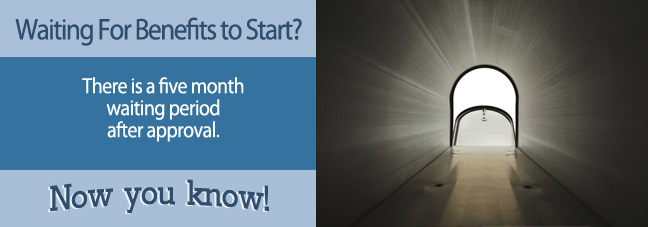Getting Your Disability Benefits
If you have become disabled and unable to work due to a medical condition, you can apply for disability benefits through the Social Security Administration (SSA) to help offset the costs of everyday living expenses and medical bills.
The application and approval process for disability benefits is, more often than not, lengthy and time consuming. Certain factors can help you determine when to expect your disability payments to begin.
Onset Dates
In general, your “onset date” is when you first begin to experience your disability. Note, however, that there are different types of onset dates according to the SSA.
The onset date you enter on your application for disability benefits is known as your “alleged onset date” (AOD). The SSA may approve this as your onset date, or they may determine that your true onset date was later.
To determine your “established onset date” (EOD), which the SSA determines as your true onset date, they take a look at your disability, medical records, statements from physicians, and when you stopped working at a substantial level.
Your onset dates discussed above refer to your medical condition, but keep in mind that this is only half of the process. You also need to qualify for disability benefits financially, and the date in which you financially qualify may be different from your established onset date.
Starting Payments
If you are approved for Supplemental Security Income (SSI), a form of disability benefits that is based on financial need, then your payments will begin immediately.
Social Security Disability Insurance (SSDI) benefits are based on your work history and are paid into through your own employment taxes. These benefits have a five-month waiting period before they begin.
Also keep in mind that the entire process of applying for benefits and waiting to be approved for them by the SSA is usually pretty long.
It may even take years from your first onset of your disability to your notification of approval and start of payments.
Lump Sums of Back Payments
You will most likely receive a lump sum of back payments when you first start your disability benefits payments that accounts for the long period of time you were waiting for your benefits to be approved.
To determine how far back your back payment will go depends on three main factors:
- First, the SSA will look at the date you applied for benefits. Depending on what type of benefits you receive, your lump sum can go back to the date of your application and a retroactive period of one year prior (for SSDI) or the first of the month after the date of your application (for SSI).
- The SSA will then look at your date of disability, which is the established onset date described above. If your EOD falls before your application date within the 12-month period, you may be able to get benefits starting then for SSDI, but for SSI, this has no bearing, as you can only receive back payments up to the month after your application date.
- Third, the five-month waiting period for SSDI applicants will affect your back payment amount. The waiting period means that your benefits won’t begin until five months after your onset date, meaning that five months of back payments will be subtracted from your determined amount.
Getting Help with Your Disability Benefits
If you are confused about your onset date or the date your benefit payments should begin, or have questions about back payments, seek the help of a disability benefits lawyer or professional disability advocate.
